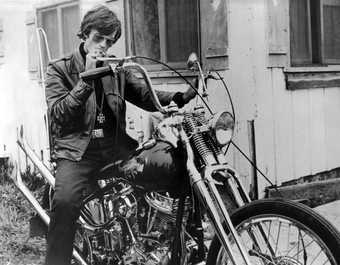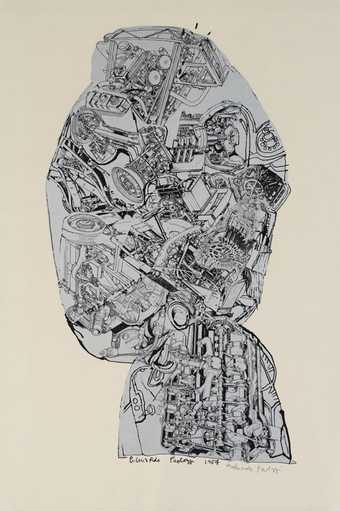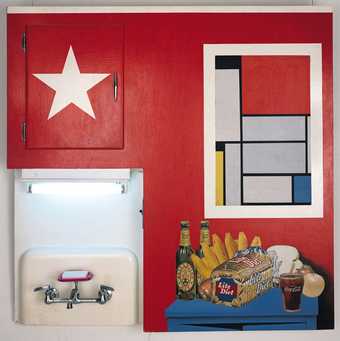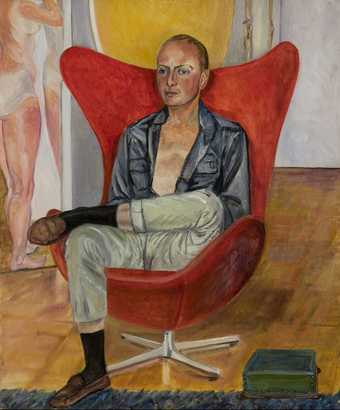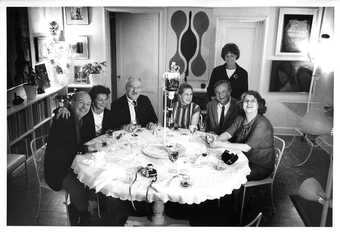For this workshop, titled ‘Criticism and Curating: The Productive Lawrence Alloway’, papers were circulated in advance to all of the participants, a group of art historians, art and film writers, and curators. The five presenters also suggested the following supplementary reading:
- ‘On the Iconography of the Movies’, Movie, vol.7, February 1963, pp.16–18.
- ‘Danish Art and Primitivism’, Living Arts, no.7, 1965, pp.44–52.
- Passage from Lawrence Alloway, The Venice Biennale, 1895–1968: From Salon to Goldfish Bowl, London 1969.
- ‘Network: The Artworld Described as a System’, Artforum, September 1972.
- ‘The Function of the Art Critic’, New York University Education Quarterly, vol.5, no.2, Winter 1974.
During the workshop the presenters briefly summarised the primary concerns of their papers and the relationship of their themes to the construction of Alloway as an art writer. Their presentations were each followed by forty-five minutes of discussion that engaged with a range of questions and ideas about Alloway, as well as the multiple spaces (museum and studio; London, New York or Albisola, Italy; itinerant teacher turned celebrated curator turned university lecturer) that he inhabited. The range of interests and experiences of the workshop participants mirrored the breadth of Alloway’s appetite for everything from pulp fiction to William Hogarth. As such, the conversation often covered large swathes of time, place and concern, moving usefully between microscopic analysis of Alloway’s texts and conceptual sweeps across the space and time of art and its culture.
Helle Brøn suggested that Alloway was the first writer to explicitly link the Danish expressionist artist, Asger Jorn to primitive or folk culture, a now normative, if not problematic, understanding of the artist. Stemming from her own extensive research on Robert Smithson, Joy Sleeman agreed that there seemed to be a pattern by which Alloway worked with artists that were seemingly disparate, such as Smithson and Jorn. Lucy Bradnock proposed that Alloway’s use of art historical methodology was demonstrative of a personal struggle between professional and amateur approaches to film and film criticism. Lisa Tickner moved to a wider discussion about the ability of film (as a social experience) to connote democratic space. Karen Alexander offered examples from British film history and the British Film Institute’s institutional history as context for Alloway’s conception of movies.
Another reoccurring workshop conversation centered Alloway’s methodology. In her presentation Jennifer Mundy argued that Alloway posited a history of art criticism in his university teaching and, as art history changed in the early 1980s, came to feel that university-based art historians were tackling the social and political questions that he had always felt art critics should. Via the route of art criticism, Mundy positioned Alloway’s long and complicated relationship to education (one participant noted that he was the near-contemporary of Oxford educated writers, Kingsley Amis and Philip Larkin, but very far from them socially or professionally) as one that sat uneasily with the conversational tone and often unsystematic nature of his writing.
The discussion of Brøn’s situation of Alloway’s relationship to Jorn raised the question of whether Alloway differentiated between writing exhibition catalogue essays and writing art criticism. During the discussion of her paper Lucy Steeds reiterated her idea that Alloway’s book on the Venice Biennale might be ‘doing art history’ to the international exhibition. There followed a general discussion of both the economic and aesthetic motivations of art writing and how those expectations have shifted since the 1960s. When the conversation turned to Alloway’s professional character, Tickner noted the practicality of the frequency with which Alloway wrote about a single artist under multiple auspices: commercial gallery texts, museum exhibition catalogues, exhibition reviews etc. Henry Meyric Hughes, Sarah Thornton, Victoria Walsh, and others in attendance, joined into this conversation as it rotated between Alloway’s work with artists and a general assessment of interrelation in the art world. At the day’s conclusion, Alex Coles returned to this issue by challenging Alloway’s traditional understanding of the studio, despite his experiences with a number of artists engaged in non-traditional studio practices, such as members of the Independent Group.
Throughout the day the question of how these papers framed Alloway as an art writer circulated within and through the narrow and broad strokes of our conversation. The short answer to that question is that such papers cannot fully capture or contextualise a thinker as broad as Alloway with his expansive catalogue of text. My initial idea in convening this workshop was to clear a ground for this kind of discussion. I wanted to enter into a day that prioritised the interaction of a group of interested people, over the aims of singular scholarly presentation. Under this logic, the essays did not need conclusive agency. Perhaps unconsciously, I was ‘doing Alloway’ by which I mean that I wanted to start with a set of shared givens and move out from there by whatever organic means unfolded. Our group gamely read a great deal of material and remained in place for a full day to engage with it all. I could not have anticipated their generosity. The workshop’s title focused upon the idea of productivity, which we all had in spades.
Productivity, of course, is rooted in Alloway’s work habits; a wild, textual energy is on display in a nearly immeasurable amount of published writing. If the workshop barely scratched the surface in terms of that archive, if was certainly fueled by its content.
Courtney J. Martin is Assistant Professor of Modern and Contemporary Art History, Brown University.

